#18 April 1857
Explore tagged Tumblr posts
Text
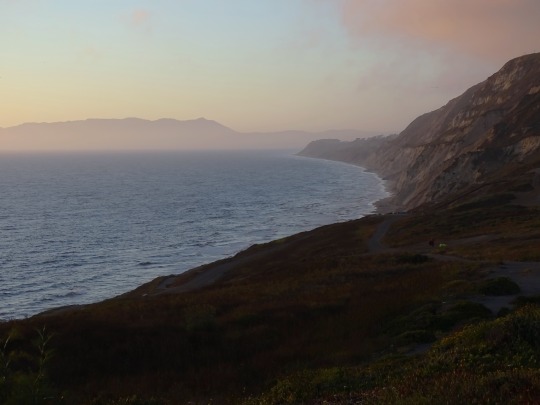










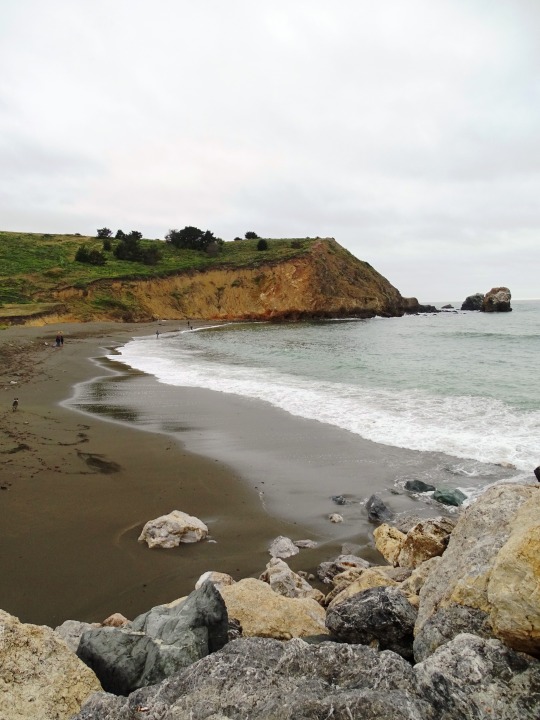





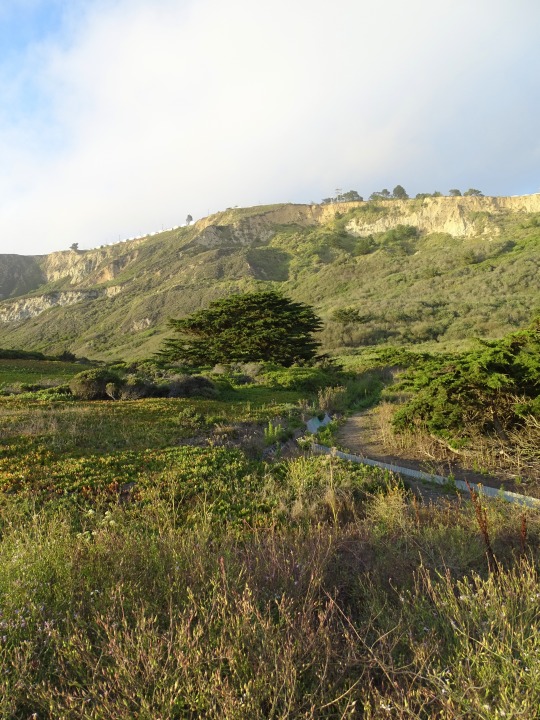






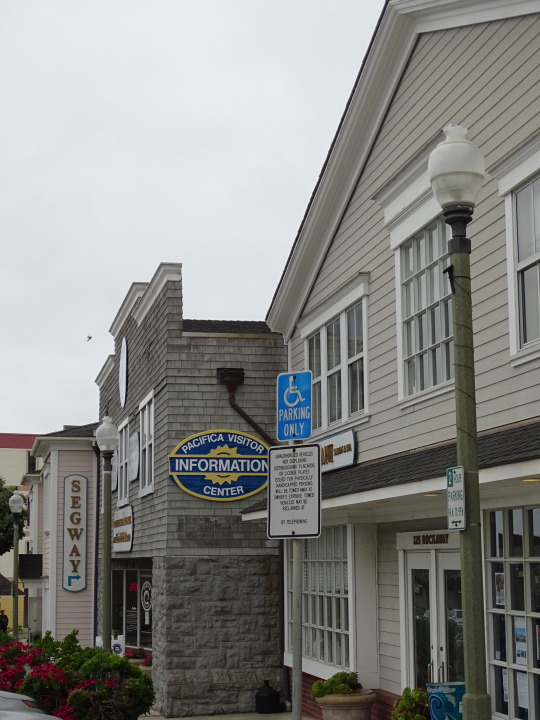



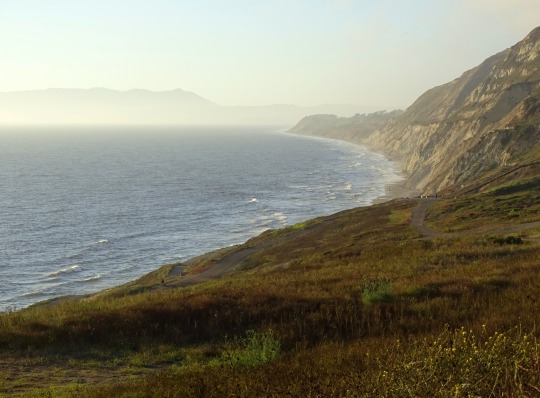

San Mateo County was officially organized on April 18, 1857.
#Daly City#Mussel Rock Park#Pacific Ocean#summer 2019#travel#USA#San Mateo County#organized#18 April 1857#anniversary#US history#landscape#cityscape#seascape#countryside#tourist attraction#landmark#Bayfront Park#Millbrae#San Francisco International Airport#Montara State Beach#Pacifica#Pacifica Beach View Park#Mori Point#architecture#plane#original photography#summer 2022#2017#vacation
0 notes
Text
The napoleonic marshal‘s children
After seeing @josefavomjaaga’s and @northernmariette’s marshal calendar, I wanted to do a similar thing for all the marshal’s children! So I did! I hope you like it. c: I listed them in more or less chronological order but categorised them in years (especially because we don‘t know all their birthdays). At the end of this post you are going to find remarks about some of the marshals because not every child is listed! ^^“ To the question about the sources: I mostly googled it and searched their dates in Wikipedia, ahaha. Nevertheless, I also found this website. However, I would be careful with it. We are talking about history and different sources can have different dates. I am always open for corrections. Just correct me in the comments if you find or know a trustful source which would show that one or some of the dates are incorrect. At the end of the day it is harmless fun and research. :) Pre 1790
François Étienne Kellermann (4 August 1770- 2 June 1835)
Marguerite Cécile Kellermann (15 March 1773 - 12 August 1850)
Ernestine Grouchy (1787–1866)
Mélanie Marie Josèphe de Pérignon (1788 - 1858)
Alphonse Grouchy (1789–1864)
Jean-Baptiste Sophie Pierre de Pérignon (1789- 14 January 1807)
Marie Françoise Germaine de Pérignon (1789 - 15 May 1844)
Angélique Catherine Jourdan (1789 or 1791 - 7 March 1879)
1790 - 1791
Marie-Louise Oudinot (1790–1832)
Marie-Anne Masséna (8 July 1790 - 1794)
Charles Oudinot (1791 - 1863)
Aimee-Clementine Grouchy (1791–1826)
Anne-Francoise Moncey (1791–1842)
1792 - 1793
Bon-Louis Moncey (1792–1817)
Victorine Perrin (1792–1822)
Anne-Charlotte Macdonald (1792–1870)
François Henri de Pérignon (23 February 1793 - 19 October 1841)
Jacques Prosper Masséna (25 June 1793 - 13 May 1821)
1794 - 1795
Victoire Thècle Masséna (28 September 1794 - 18 March 1857)
Adele-Elisabeth Macdonald (1794–1822)
Marguerite-Félécité Desprez (1795-1854); adopted by Sérurier
Nicolette Oudinot (1795–1865)
Charles Perrin (1795–15 March 1827)
1796 - 1997
Emilie Oudinot (1796–1805)
Victor Grouchy (1796–1864)
Napoleon-Victor Perrin (24 October 1796 - 2 December 1853)
Jeanne Madeleine Delphine Jourdan (1797-1839)
1799
François Victor Masséna (2 April 1799 - 16 April 1863)
Joseph François Oscar Bernadotte (4 July 1799 – 8 July 1859)
Auguste Oudinot (1799–1835)
Caroline de Pérignon (1799-1819)
Eugene Perrin (1799–1852)
1800
Nina Jourdan (1800-1833)
Caroline Mortier de Trevise (1800–1842)
1801
Achille Charles Louis Napoléon Murat (21 January 1801 - 15 April 1847)
Louis Napoléon Lannes (30 July 1801 – 19 July 1874)
Elise Oudinot (1801–1882)
1802
Marie Letizia Joséphine Annonciade Murat (26 April 1802 - 12 March 1859)
Alfred-Jean Lannes (11 July 1802 – 20 June 1861)
Napoléon Bessière (2 August 1802 - 21 July 1856)
Paul Davout (1802–1803)
Napoléon Soult (1802–1857)
1803
Marie-Agnès Irma de Pérignon (5 April 1803 - 16 December 1849)
Joseph Napoléon Ney (8 May 1803 – 25 July 1857)
Lucien Charles Joseph Napoléon Murat (16 May 1803 - 10 April 1878)
Jean-Ernest Lannes (20 July 1803 – 24 November 1882)
Alexandrine-Aimee Macdonald (1803–1869)
Sophie Malvina Joséphine Mortier de Trévise ( 1803 - ???)
1804
Napoléon Mortier de Trévise (6 August 1804 - 29 December 1869)
Michel Louis Félix Ney (24 August 1804 – 14 July 1854)
Gustave-Olivier Lannes (4 December 1804 – 25 August 1875)
Joséphine Davout (1804–1805)
Hortense Soult (1804–1862)
Octavie de Pérignon (1804-1847)
1805
Louise Julie Caroline Murat (21 March 1805 - 1 December 1889)
Antoinette Joséphine Davout (1805 – 19 August 1821)
Stephanie-Josephine Perrin (1805–1832)
1806
Josephine-Louise Lannes (4 March 1806 – 8 November 1889)
Eugène Michel Ney (12 July 1806 – 25 October 1845)
Edouard Moriter de Trévise (1806–1815)
Léopold de Pérignon (1806-1862)
1807
Adèle Napoleone Davout (June 1807 – 21 January 1885)
Jeanne-Francoise Moncey (1807–1853)
1808: Stephanie Oudinot (1808-1893) 1809: Napoleon Davout (1809–1810)
1810: Napoleon Alexander Berthier (11 September 1810 – 10 February 1887)
1811
Napoleon Louis Davout (6 January 1811 - 13 June 1853)
Louise-Honorine Suchet (1811 – 1885)
Louise Mortier de Trévise (1811–1831)
1812
Edgar Napoléon Henry Ney (12 April 1812 – 4 October 1882)
Caroline-Joséphine Berthier (22 August 1812 – 1905)
Jules Davout (December 1812 - 1813)
1813: Louis-Napoleon Suchet (23 May 1813- 22 July 1867/77)
1814: Eve-Stéphanie Mortier de Trévise (1814–1831) 1815
Marie Anne Berthier (February 1815 - 23 July 1878)
Adelaide Louise Davout (8 July 1815 – 6 October 1892)
Laurent François or Laurent-Camille Saint-Cyr (I found two almost similar names with the same date so) (30 December 1815 – 30 January 1904)
1816: Louise Marie Oudinot (1816 - 1909)
1817
Caroline Oudinot (1817–1896)
Caroline Soult (1817–1817)
1819: Charles-Joseph Oudinot (1819–1858)
1820: Anne-Marie Suchet (1820 - 27 May 1835) 1822: Henri Oudinot ( 3 February 1822 – 29 July 1891) 1824: Louis Marie Macdonald (11 November 1824 - 6 April 1881.) 1830: Noemie Grouchy (1830–1843) —————— Children without clear birthdays:
Camille Jourdan (died in 1842)
Sophie Jourdan (died in 1820)
Additional remarks: - Marshal Berthier died 8.5 months before his last daughter‘s birth. - Marshal Oudinot had 11 children and the age difference between his first and last child is around 32 years. - The age difference between marshal Grouchy‘s first and last child is around 43 years. - Marshal Lefebvre had fourteen children (12 sons, 2 daughters) but I couldn‘t find anything kind of reliable about them so they are not listed above. I am aware that two sons of him were listed in the link above. Nevertheless, I was uncertain to name them in my list because I thought that his last living son died in the Russian campaign while the website writes about the possibility of another son dying in 1817. - Marshal Augerau had no children. - Marshal Brune had apparently adopted two daughters whose names are unknown. - Marshal Pérignon: I couldn‘t find anything about his daughters, Justine, Elisabeth and Adèle, except that they died in infancy. - Marshal Sérurier had no biological children but adopted Marguerite-Félécité Desprez in 1814. - Marshal Marmont had no children. - I found out that marshal Saint-Cyr married his first cousin, lol. - I didn‘t find anything about marshal Poniatowski having children. Apparently, he wasn‘t married either (thank you, @northernmariette for the correction of this fact! c:)
#Marshal‘s children calendar#literally every napoleonic marshal ahaha#napoleonic era#Napoleonic children#I am not putting all the children‘s names into the tags#Thank you no thank you! :)#YES I posted it without double checking every child so don‘t be surprised when I have to correct some stuff 😭#napoleon's marshals#napoleonic
79 notes
·
View notes
Text
Charles Haddon Spurgeon
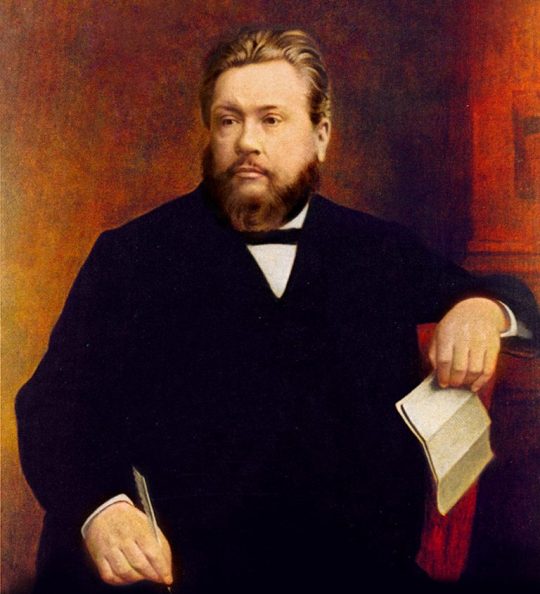
Charles Haddon Spurgeon (1834-1892) was called to pastor the New Park Street Chapel, London, when he was only nineteen. This church became the 6,000 seat Metropolitan Tabernacle, which he pastored until his death at age 58. Through his relatively short but phenomenally productive ministry, Spurgeon pastored, directed a Pastor’s College, oversaw a Bible and tract society, organized Stockwell Orphanage, published the monthly magazine Sword and Trowel, edited a weekly sermon (among the several he preached each week), and wrote a number of books, including his well-known Treasury of David.
Timeline of the Life of Charles Haddon Spurgeon (1834-1892)
1834 (June 19) – Born at Kelvedon, Essex.
1850 (January 6) – Converted at Colchester.
1850 (April 4)- Admitted to Church membership at Newmarket.
1850 (May 3) – Baptized in the River Lark at Isle-ham.
1851 – Becomes Pastor of Waterbeach Baptist Chapel.
1853 – First literary effort, No. I of Water-beach Tracts published.
1853 (December) – Preaches at New Park Street Chapel, London, for the first time.
1854 (April) – Accepts Pastorate of New Park Street Chapel.
1855 (January) – First sermon in the “New Park Street Pulpit” published.
1855 (February) – First preaches at Exeter Hall.
1855 (July) – Mr. T. W. Medhurst becomes C. H. Spurgeon’s first ministerial student.
1856 (January 8) – Marries Miss Susannah Thompson.
1856 (June) – Metropolitan Tabernacle Building Committee formed.
1856 (September 20)- Twin sons Thomas and Charles born.
1856 (October 19) – Surrey Gardens Music Hall Disaster.
1856 (November 23) – Services recommenced at the Music Hall.
1857 – A second student accepted by C. H. Spurgeon and the Pastor’s College practically founded.
1857 (October 7) – Preaches to 23,654 persons at the Crystal Palace on Fast Day.
1859 (August 16) – Foundation Stone of the Metropolitan Tabernacle laid.
1861 (March 18) – Metropolitan Tabernacle opened with a great prayer meeting.
1864 (June 5) – The famous ��Baptismal Regeneration” sermon preached.
1866 – Metropolitan Tabernacle Colportage Association founded.
1867 (March 24-April 21) – Sunday services, each attended by 20,000 persons, held at the Agricultural Hall, Islington, during the renovation of the Metropolitan Tabernacle.
1867 – Stockwell Orphanage (Boys’ side) founded.
1873 (October 14) – Foundation Stone of the Pastors’ College Building laid.
1875 – Mrs. Spurgeon’s Book Fund inaugurated.
1879 – Girls’ Orphanage founded.
1884 (June 18 and 19) – Jubilee Celebrations and presentation of testimonial (£4,500).
1887 (August) – First “Down-grade” paper published in “The Sword and the Trowel.”
1887 (October) – Withdrawal from the Baptist Union.
1891 (June 7) – Last sermon at the Metropolitan Tabernacle.
1891 (October 26) – Goes to Mentone for the last time.
1892 (January 31) – Passes away.
1892 (February 11) – Interred at Norwood Cemetery.
7 notes
·
View notes
Video
Caroline Hulda Felt Cutter, 1/6th-Plate Daguerreotype, Circa 1848 by Ann Longmore-Etheridge Via Flickr: Copyright Ann Longmore-Etheridge Collection. Caroline Hulda Felt was born 24 April, 1830, in Stow, Middlesex County, Massachusetts. She was the daughter of John Felt (1798-1887) and Huldah Hobart Conant Felt (1803-1861). On 18 April 1850, Caroline married Julius Cutter (1824-1890) of Jaffrey, Cheshire County, New Hampshire. Julius Cutter was born on November 28, 1824, in Jaffrey, Hillsboro, New Hampshire, to Benjamin Cutter and Grata Cutter (born Hunt). He had four siblings: Sarah Augusta Campbell (born Cutter), Adaliza Phelps (born Cutter), Ermina Chamberlin (born Cutter), and Benjamin F. Cutter. Julius and Caroline had two daughters: Emma Maria Cutter Mitchell (1853-1937) and Alice E. Cutter (1857-1916). Caroline died 18 January, 1921, aged 90, in Cambridge, Middlesex County, Massachusetts.
0 notes
Text

Anna Bilińska-Bohdanowicz, Self-Portrait with Apron and Brushes, 1887
Anna Bilińska-Bohdanowicz (8 December 1857 - 18 April 1893) was a Polish painter, known for her portraits. A representative of Realism, she spent much of her artistic life in Paris. Life. She was born Anna Bilińska, the daughter of a Polish physician: "ma temperament kozaczy, ale serce" - Of her background, she joked that she "ha[d] a Cossack's temperament but a Polish heart". Via Wikipedia
#PolishArtinBritain #sztukapolska #polishartist #polishfemaleartist #womensart #artbywomen #painter #polishpainter
0 notes
Text
Jensen's folly and the proof of "No Irish Need Apply" [Part 2]
Continued from part 1. This post was originally published on WordPress in June 2018.
Looking on newspapers.com, I found 3,047,608 matches for the words "no Irish need apply," with even a story about it in the Buffalo paper, The Weekly Economist, in 1843. Now, not all of those portended to ads. [2] Narrowing the search, covering the years of 1800 to 1860, I brought the total to about 113,000. The latter number may be inflated due to false drops since quoting the phrase itself only brings up 158 results, extending it to 1900 gives you about 1,400 results, over 60 of which are listed below. I also got some sources from the Library of Congress's Chronicling America collection of old newspapers, which are included in the below listing of varied ads.
1820s
June 29, 1828 ad in the New York City paper, The Evening Post
July 24, 1828 ad in the New York City paper, The Evening Post
August 8, 1828 ad in the New York City paper, The Evening Post
September 11, 1828 ad in the New York City paper, The Evening Post
October 8, 1828 ad in the New York City paper, The Evening Post
June 8, 1829 ad in the New York City paper, The Evening Post
June 19, 1829 ad in the New York City paper, The Evening Post
June 23, 1829 ad in the New York City paper, The Evening Post
October 27, 1829 ad in the New York City paper, The Evening Post
1830s
April 29, 1830 ad in the New York City paper, The Evening Post, related to the one a few days before
New York Herald attacks No Irish Need Apply adverts on July 30, 1830
1840s
May 18, 1841 ad in the New York City paper, New York Tribune
August 24, 1842 ad in the New York City's New York Tribune
February 7, 1844 ad in the Philadelphia paper, Public Ledger
January 7, 1847 ad in the Philadelphia paper, Public Ledger
April 23, 1847 ad in the Philadelphia paper, Public Ledger
November 4, 1847 ad in the Philadelphia paper, Public Ledger
January 25, 1848 ad in the Philadelphia paper, Public Ledger
October 28, 1848 ad in the Philadelphia paper, Public Ledger
July 16, 1849 ad in the New York City paper, New York Herald, reprinted from days before
1850s
February 25, 1850 ad in the Philadelphia paper, Public Ledger
March 11, 1850 ad in the Philadelphia paper, Public Ledger
August 6, 1850 ad in the Philadelphia paper, Public Ledger
January 13, 1851 ad in the New York City's New York Tribune
February 5, 1851 ad in the Baltimore Sun
March 13, 1851 ad in the New York Daily Herald
April 22, 1851 ad in the Baltimore Sun
July 24, 1851 ad in the Philadelphia paper, Public Ledger
December 31, 1851 ad in the Baltimore Sun, accompanied by another saying they are looking for someone who is white, but not Irish, as a cook
April 13, 1852 ads (top and bottom of image) in the Philadelphia paper, Public Ledger
May 14, 1852 ad in New York City's New York Tribune
June 21, 1852 ad in the Philadelphia paper, Public Ledger
August 26, 1852 ad in the Philadelphia paper, Public Ledger
October 11, 1852 ad in the Philadelphia paper, Public Ledger
December 31, 1852 ad in the New Orleans paper, The Times-Picayune
June 22, 1853, the Lancaster Ledger reports that the New York Herald is being sued for libel for attaching "no Irish may apply" to one of its ads, which the Ledger calls "queer"
June 2, 1853, the New York Herald criticizes "No Irish Need Apply" ads
July 30, 1853 ad in the Philadelphia paper, Public Ledger
February 19, 1854, the New York Herald talks about their ""No Irish Need Apply" advertisers"
March 30, 1854 ad in the Baltimore Sun
October 6, 1854 ad in the West Virginia paper, the Wheeling Daily Intelligencer
April 21, 1855 ad in the Freehold, New Jersey paper, the Monmouth Inquirer
May 18, 1855 ad in Baltimore Sun
September 18, 1855 ad in the Philadelphia paper, Public Ledger
October 17, 1855 ad in the Washington, D.C. Evening Star, likely related.
March 28, 1856 ad in the Baltimore Sun
February 14, 1857 ad in the New York Times
December 7, 1857 ad in New Orleans paper, The Times-Picayune
April 20, 1857 ad in the Baltimore Sun
March 20, 1858 ad in the New York Times
August 17, 1858 ad in the Baltimore Sun
October 1, 1858 ad in the Baltimore Sun, reprinted on October 2 and 4, at least
October 13, 1858 ad in New York Times
May 10, 1859 ad in the New York Times
September 21, 1859 ad in the New York Times
1860s
March 29, 1860 ad in the Brooklyn Daily Eagle
April 3, 1860 ads (here and here) in the Philadelphia paper, Public Ledger
June 8, 1860 ad in the Baltimore Sun, related is ad the day before
August 6, 1860 ad in the Cincinnati Daily Press
August 25, 1860 ad in the Philadelphia paper, Public Ledger
Ad and comment in Columbia Democrat and Bloomsburg General Advertiser (Bloomsburg, Pennsylvania) on March 12, 1864
© 2018-2023 Burkely Hermann. All rights reserved.
Notes
[2] This is apart from mentions of it in 1878 to counter such sentiment (and in 1864), the Guardian (see here, here, here, and here), the Liverpool Mercury in 1854 (here and here), 1855 (also see here, here, here, ), 1857, 1858, 1859, and 1863, along with other mentions in English papers in 1844, 1847, and 1856. A comedy, in the 1850s, was even produced on this subject! In all, there are over 105,000 results for England alone, over 9,000 for Scotland, over 8,000 for Ireland, over 5,000 for Northern Ireland, over 4,700 for Australia, over 1,500 for Wales and almost 1,000 for Canada.
#irish history#irish americans#irish heritage#irish genealogy#newspaper clippings#1860s#1850s#1840s#1830s#1820s#wordpress#19th century
0 notes
Text

There were wooden sidewalks, hitching posts and gas lights at 8th and Michigan Streets when this building, now the oldest building in use in the Milwaukee Public School System, was built in 1884. A school has occupied the site ever since the system was formed in 1846. The building pictured here is the third on the site. Over the years, the schools have had many names: Fourth Ward from 1846 to 1868; Plankinton School from 1868 to 1875; Fourth District School from 1875 to 1912; Eighth Street School from 1912 to 1969; North Division Downtown Campus in 1969; Urban Day (a private school rented the building) from 1969 to 1972; Fulton Junior High School Annex, 1972 to 1976; and since then, Eighth Street Middle School. More than 370 teachers, 34 principals and 10 assistant principals have staffed the school over the years. The present school building replaced a structure built in 1857 and which had been remodeled and repaired several times. On Feb. 18, 1884, the students were moved to temporary quarters in the Exposition Building, the forerunner of the auditorium, and the old school was torn down. The new building opened Oct. 8, 1884. Eighth Street School will celebrate its centennial the week of April 9 with a variety of events. On Oct. 8 there will be a reunion of former students and faculty. Graduates and former staff members are being sought. For more information, call the school office, 278-8366. Photograph and information from the Milwaukee Public Library Local History Collection.
0 notes
Text
History
April 18, 1775 - The Midnight Ride of Paul Revere and William Dawes occurred as the two men rode out of Boston about 10 p.m. to warn patriots at Lexington and Concord of the approaching British.
April 18, 1906 - The San Francisco Earthquake struck at 5:13 a.m., followed by a massive fire from overturned wood stoves and broken gas pipes. The fire raged uncontrollably for three days resulting in the destruction of over 10,000 acres of property and 4,000 lives lost.
April 18, 1942 - The first air raid on mainland Japan during World War II occurred as General James Doolittle led a squadron of B-25 bombers taking off from the carrier Hornet to bomb Tokyo and three other cities. Damage was minimal, but the raid boosted Allied morale following years of unchecked Japanese military advances.
April 18, 1982 - Queen Elizabeth II of England signed the Canada Constitution Act of 1982 replacing the British North America Act of 1867, providing Canada with a new set of fundamental laws and civil rights.
Birthday - American attorney Clarence Darrow (1857-1938) was born in Kinsman, Ohio. He championed unpopular causes, and is best known for the Scopes 'monkey trial' in which he defended a teacher who taught the theory of evolution.
0 notes
Photo
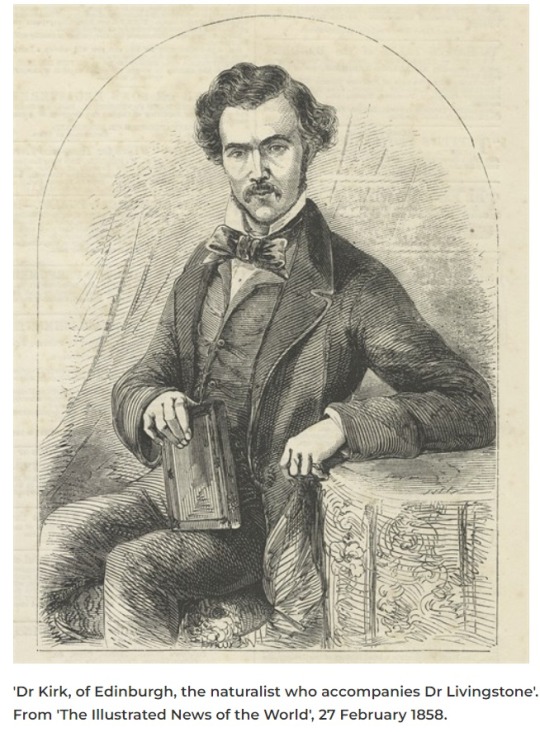
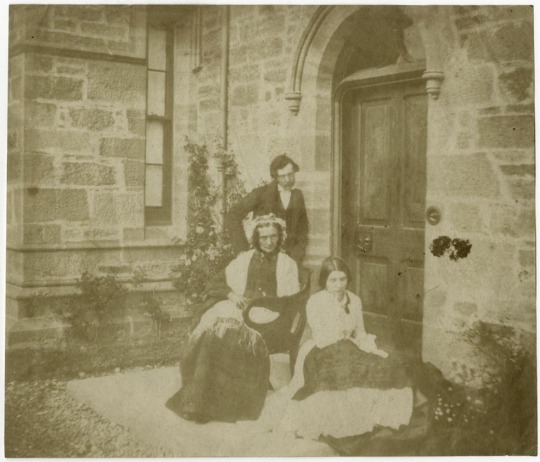
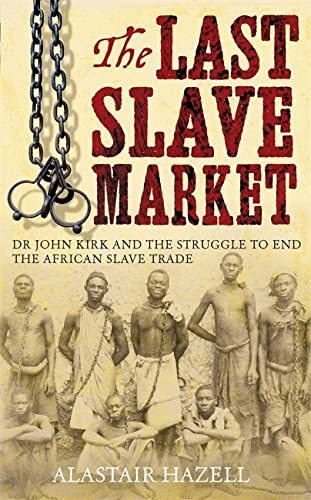
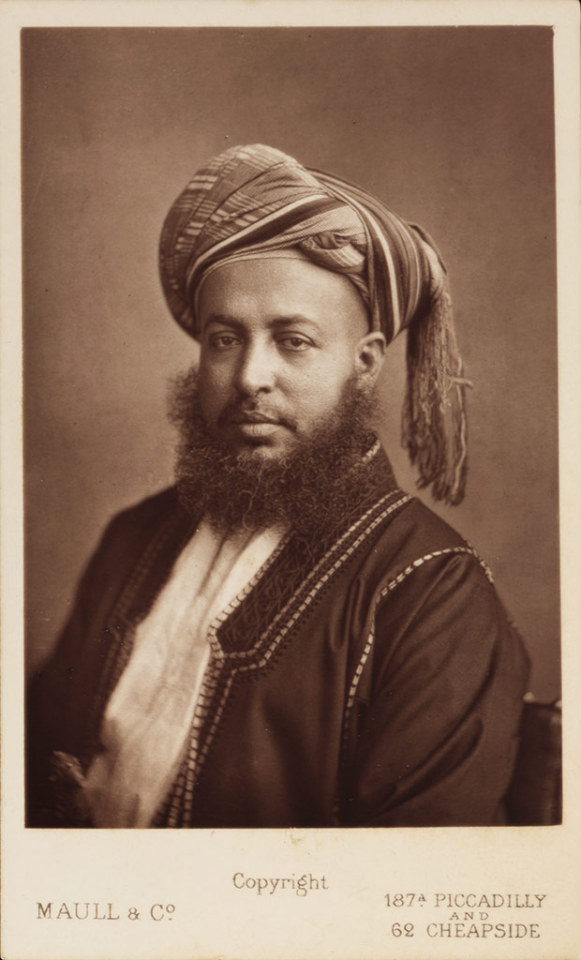
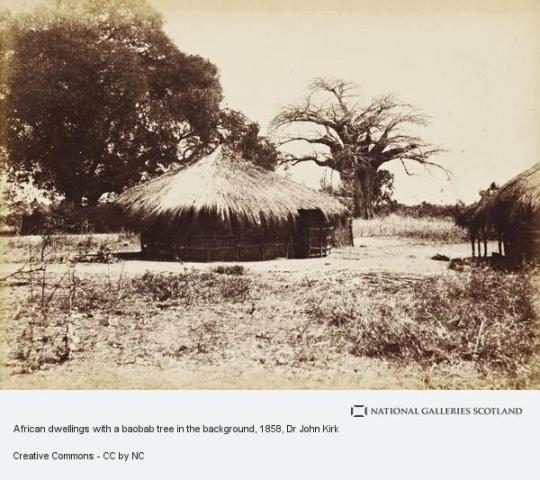
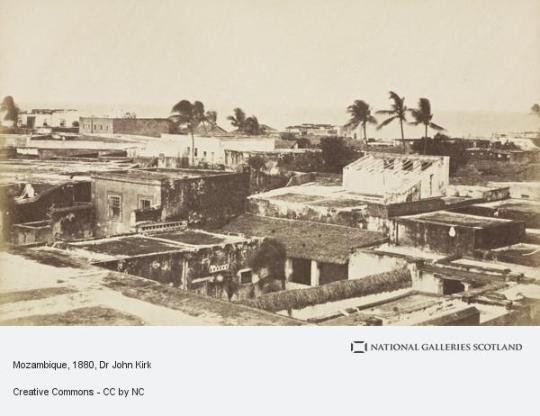
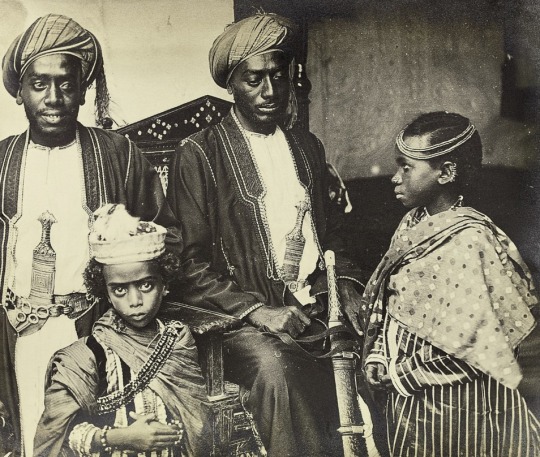
John Kirk was born in Barry, Angus, near Arbroath December 19th 1832.
Another Scot that few of us will know, but his story deserves a lot more attention than it gets, he was instrumental in ending slavery in Zanzibar through his influence with the then Sultan.
Born the second of the four children of the Rev. John Kirk who was himself a keen botanist. He became interested in botany at a very early age since it was his father’s principal hobby. His father tutored him at first then he attended the local high school in Arbroath and he matriculated at the age of 15 and entered Edinburgh University in 1847 at that age first the Arts faculty then the Medical School. By the time he was 22 he graduated from the medical faculty, MD, LRCS. He was also a pupil of the famous botanist Prof. I. H. Balfour during this period
He first took a post as resident physician at the Royal Edinburgh Infirmary, one of his colleagues being Joseph Lister. The Crimean war had just started and like many other young doctors Kirk sailed for the area in 1855; there he stayed until 1856 being stationed mainly at Erenkevi in the Dardanelles and at Scutari. After the Crimean episode he collected plants on Mt. Ida and Mt. Olympus before returning to London in 1856. He was soon off again, however, this time to Syria, Palestine, Egypt and Italy arriving back in London once again in 1857.
From 1858–1863 he was physician, economic botanist and naturalist (and later chief officer) to Livingstone’s Zambesi Expedition. When Livingstone first approached him about this post Kirk is reported to have been so enthusiastic that he replied ‘be ready tomorrow’. Actually being a good Scot he was not quite that impetuous and wanted to have details of ‘the necessary expenses’. Livingstone’s classic reply of 4th January 1858 was ;
‘I am not quite clear as to what you mean with regard to necessary expenses. Suppose you shoot a buffalo there will be no expense incurred in cooking and eating it. There are no inns or hotels in the country. The lodging will all be free – expeditions of this kind cannot be successful unless all the members are willing to rough it and it will be well if we all thoroughly understand this before we start. The salary is £350 per annum.‘
Livingstone and Kirk got on very well and in a letter, Livingstone recorded his personal views as follows
‘The Doctor has been I can assure you a most assiduous and painstaking collector – nothing ever deterred him from doing his duty and he did it like a man. If you can confer any favour on him you will never find a more deserving recipient – this I can say after five years of constant intercourse’.
The reason Kirk remained friends with Livingstone when so many others failed is partly due to his outstanding qualities of forbearance and understanding and partly that Kirk was the only other member of the expedition with the physical toughness and the strength of will to match Livingstone’s own. His last association with Livingstone was to act as a pall-bearer on 18 April 1874 at Livingstone’s funeral in Westminster Abbey – the others included Stanley and Jacob Wainwright, one of the Africans who had carried Livingstone’s body to the coast after his death; a long and fantastic journey of 11 months.
From 1866 to 1873 Kirk was Vice Consul for Zanzibar and later Assistant Political Agent. In 1873 he was appointed Consul General at Zanzibar and under his influence the Sultan abandoned slavery in his dominions. In 1880 he was Political Agent at Zanzibar and was created KCMG in 1881. He retired in 1887 on account of ill-health. From 1889–1890 he was a diplomat for Britain at the Brussels Anti-Slavery Conference where his long association with the problem was of enormous value. He was created KCB in 1890. He was one of those many giants produced by the Victorian era and his great strength of character shows in the various portraits which exist.
He was very interested in the practical uses of plants and during the Zambesi expedition he made experiments with Strophanthus which was used as an arrow poison by the natives in the area. He discovered its effect on the heart and sent material back to Edinburgh for more detailed investigation. As a result strophanthinum was added to the pharmacopeia and a minor industry started in Central Africa. It is still used as a heart stimulant. He was quick to see the possibilities of an area and published a report on the natural products and capabilities of various areas he visited with Livingstone. He recommended the Shire Highlands for European settlement, the Manganja Hills for coffee planting and the Batoka Highlands for cattle ranching. Kirk fostered the Zanzibar copal industry, the resin from a leguminous plant important in the manufacture of varnish. He also developed the important india-rubber trade, the rubber being obtained not from Hevea (then not grown in the Old World) but from wild climbers of the genus Landolphia.
John Kirk was also one of the earliest amateur photographers and certainly the first to take photographs of vegetation in the Zambesi area if not in tropical Africa. Wax negatives of the 1859 photographs are still extant and quite excellent prints taken from them. Many of these have been reproduced in Coupland’s fascinating book ‘Kirk on the Zambesi’ and by Foster in his "The Zambesi Journal and letters of Dr. John Kirk" and "The Zambesi Doctors".
Pics are of John Kirk, second is with his wife and daughter, the fourth pic is Sultan of Zanzibar, Sayyid Sir Barghash bin Sa'id (ruled 1870-1888). Other pics were taken by Kirk during his years in Africa.
More about Dr Kirk and his time in Africa here https://www.abctales.com/story/angusfolklore/sir-john-kirk-and-end-slavery-zanzibar
10 notes
·
View notes
Photo
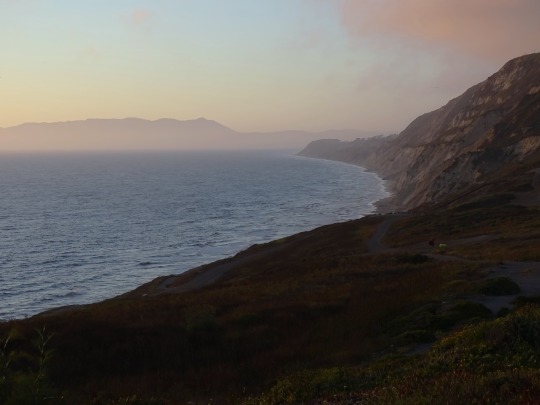







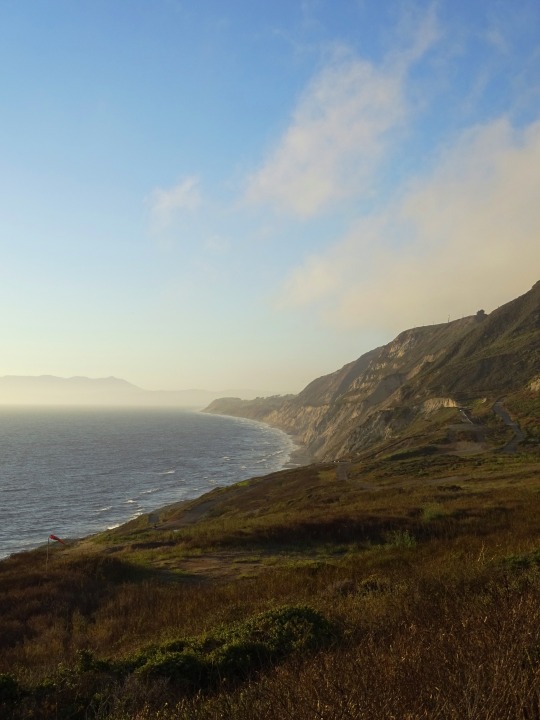

San Mateo County was officially organized on April 18, 1857.
#Daly City#Mussel Rock Park#Pacific Ocean#summer 2019#travel#USA#San Mateo County#organized#18 April 1857#anniversary#US history#landscape#cityscape#seascape#countryside#tourist attraction#landmark#Bayfront Park#Millbrae#San Francisco International Airport#Montara State Beach#Pacifica#Pacifica Beach View Park#Mori Point#architecture#plane#original photography#summer 2022#2017
0 notes
Text
In April 1856, a young girl from the Xhosa tribe named Nongqawuse walked with a friend to the banks of the Gxarha River, near the Indian Ocean. This was in an area that is now the Eastern Cape of South Africa. The two girls met two men who claimed to be ancestor spirits bringing a message from their ancestors: The Xhosa dead will rise up and lead the people into an era of freedom and prosperity.
In order for this to happen, the strangers explained, the Xhosa people would have to abandon all of their old ways. They specifically said that witchcraft, sorcery, and sexual promiscuity had to be ended. The Xhosa people were to dedicate their time to building new pens for cattle and new fields for the new crops that would suddenly spring forth with the arrival of their spirit ancestors.
There was one catch to this. The Xhosa were a people who depended primarily on cattle and the growing of crops to feed their cattle. This great leap of faith is what would usher in the triumph of their people.
Incredibly, the Xhosa people, upon hearing this tale from Nongqawuse and her friend, embarked on a campaign of killing their cattle. Not everyone was convinced that this was the right thing to do, but many accepted the prophecy, mostly because important members of the tribe had said they accepted it. This validation from people in authority was enough to convince them the prophecy was real.
Nongqawuse predicted that the prophecy would be fulfilled on Feb. 18, 1857, when the sun would turn red. This did not happen, so Chief Sarili went to the river to visit with the girls and came back convinced they got the date wrong. The prophecy would come true in eight days, so the people had better get cracking on the cattle killing in order to be ready for the great transition to the glorious future.
The result of this lunacy was that 80 percent of the population died from the subsequent famine caused by the cattle killing. It seems incredible to modern people that a population would try to commit suicide because a teenage girl claimed she saw the future, but we live in an age in which Greta Thunberg is treated like a prophet by the environmental movement. She is our Nongqawuse.
9 notes
·
View notes
Text
The Year of Surprise
Friday - February 18, 2022

In my review of 2022 there is one thing that was evident - the element of surprise. One degree that produces all sorts of shocks and surprises is 22°, regardless of the sign or planet it is attached to. During 2022 there are numerous times when various planets are at 22° for long periods of time. And at times there are multiple planets at 22°. 22° is an Aquarius/Uranus ruled degree, so it has qualities of innovation, independence, freedom, revolution, science and technology. I rarely use the word "quantum" as it has been so overused, but in this case it is appropriate. 22° is a degree that makes energies bigger, denser, deeper and more impactful. And it does all of this in rather shocking and surprising ways. Yesterday Neptune moved to 22° Pisces, a place it toured from mid-April to late May in 2021. Prior to that the last time Neptune was at 22° Pisces was 1857. Expect things to surprise you in regards to organized religion, the metaphysical aspects of life, those things we as a society consider "spiritual," and how people define God. This can be a time of great truth; truth revealed and truth squashed so pay attention. We will more than likely see the best of humankind, and the worst. Neptune will stay at 22° till March 16h, then go to 24° before eventually retrograding back to 22° later in the year. For today, Mars and Venus continue their conjunction at 18° Capricorn, a degree that reminds us to carry on, and go forward. The Sun moves into Pisces and the rest of the day sits at 0°, so you may feel "offline" spiritually. But an Earth Trine involving the Moon in Virgo continues to keep you grounded, so you at least feel "put together" today. Keep your focus today. As these "surprises" show up in the weeks to come, stay focused on your inner commitment, and to that which guides you onward. The year is about to get weird.
16 notes
·
View notes
Text
Essay on Freedom Fighters
Essay on Freedom Fighters in Hindi : The spirit of patriotism among the freedom fighters was filled up profoundly. They educated everybody a league lesson and also obtained India freed with each other. All of us should remember them pleasantly and adhere to the path shown by them.
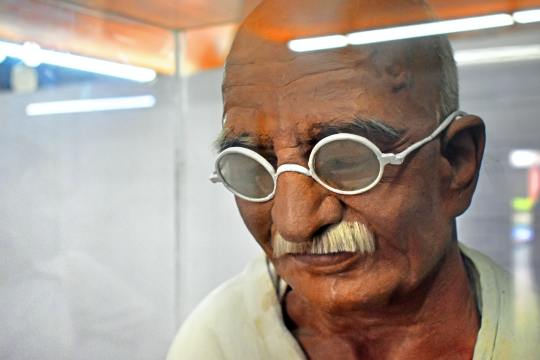
3. Rani of Jhansi (Laxmi Bai). The great Jhansi ki Rani was born on 19 November 1928 in Kashi, India. He encountered the British regulation increasingly and added considerably to the Revolt of 1857. Rani Laxmi Bai passed away on 17 June 1858 in Gwalior, dealing with British policy.
4. Tatya Tope. Tatya Tope was born Ramchandra Panduranga. He was birthed in 1814 in a Brahmin family in Aola, Nashik. He played an unlimited duty in the Rebellion of 1857 by holding the blog post of General. He was hanged at Shivpuri on 18 April 1859.
5. Mahatma Gandhi. Every one of them are passionately called "Bapu". He was born on 2 October 1869 at a place called Porbandar in Gujarat. They have a big payment in making the nation free.
6. Subhash Chandra Bose. We call them affectionately as "Netaji". The great netaji was born on January 23, 1897, in Cuttack, Odisha. He founded the "Azad Hind Fauj" to liberate the nation. He left high tasks like ICS to offer the country.
7. Gopal Krishna Gokhale. Gopal Krishna Gokhale was a social agitator as well as a political leader throughout the Indian self-reliance movement. He was born on May 9, 1866, in Kothaluk, Ratnagiri Area, Maharashtra, India. Gokhale was an elderly leader of the INC as well as the founder of the Slaves of India Culture.
8. Shaheed Bhagat Singh. He was born on 27 September 1907 in Punjab. They wanted to flatter the nation given that youth. They were full of patriotic feelings because youth. He asked the youth of Punjab to take part in the liberty activity of India.
9. Raj Expert. His complete name was Shivram Raj Guru. He was born on 24 August 1908 in Maharashtra. He had a significant duty in the Indian freedom movement. He was a citizen of Maharashtra. He killed a British policeman in Lahore in 1928.
10. Sukhdev Thapar. Shaheed Sukhdev Thapar was an Indian revolutionary. Thapar was born on 15 May 1907, in Punjab, India. He was an elderly participant of the Hindustan Socialist Republican Association. He took part in many deals with Bhagat Singh as well as Shivram Rajguru and also hanged on 23 March 1931 at the age of 23 by the British authorities together with Bhagat Singh and also Raj Master.
Conclusion. In this article, you check out carefully the names of Indian freedom fighters. Aside from this, Begum Hazrat Mahal, Ganesh Vidyarthi, Jai Prakash Narayan, Batukeshwar Dutt, Ashfaq Ali, Rabindranath Tagore, Vipinchandra Friend, Nana Saheb, Chiranjan Das, Raja Rammohan Roy played a significant duty in the freedom battle of the nation.
3 notes
·
View notes
Text
Empress Elisabeth of Austria-Hungary
Empress Elisabeth of Austria-Hungary was born on December 24th, 1837 as Duchess Elisabeth Amalie Eugenie to Duke Maximilian and Princess Ludovika of Bavaria. Elisabeth was called Sisi. The majority of her childhood was spent at Possenhofen Castle in Bavaria, Germany. Aside from her parents unhappy marriage due to her fathers affairs, Sisi and her seven (surviving) siblings had a relatively happy childhood. Sisi enjoyed being outside the most. She would swim in the lake and go horseback riding. Below is presumably the first photo taken of Sisi when she was a little girl.
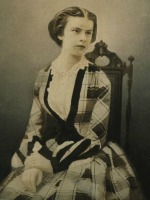
Emperor Franz Joseph l’s mother Archduchess Sophie, also Ludovika’s sister, had contacted Ludovika and told her than Sisi’s older sister Helene would be engaged to Franz Joseph. Franz and Helene were set to meet at the Kaiser villa in Bad Ischl. Ludovika decided to take Sisi along with them to help Helene adjust to the imperial lifestyle. Sisi was 15 and Helene was 18 at the time. Below is an image of Helene as a young adult (maybe 18-19)
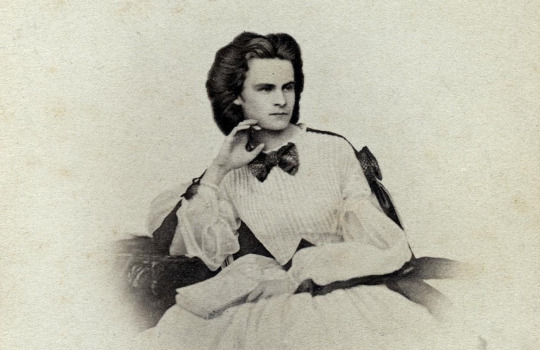
Franz Joseph was not known for disagreeing with his mother, much less defying her. Imagine the courts surprise when Franz decided to marry Sisi instead of Helene. Franz and Sisi’s engagement was announced 5 days after they’d met. On April 24th, 1854 Franz and Sisi were married in Vienna. Below is an image of Franz Joseph and Elisabeth.
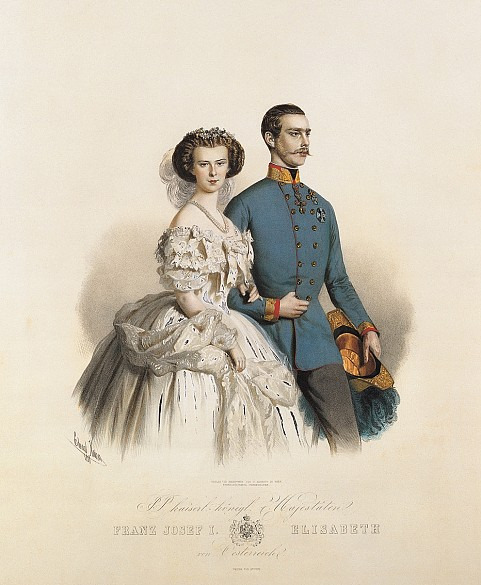
The Hapsburg court was known for being strict, formal, and steeped in tradition. Sisi was shocked when her life of freedom became a prison of protocol and formality. She never did adjust. Sisi had a horrible relationship with her mother-in-law. Archduchess Sophie believed that the Empress’s only duty was to produce an heir for the throne. Sophie believed that the Empress should never be involved in politics or affairs of the state. Sisi did not agree. She was adamant about improving the lives of the people in the Italian and Hungarian parts of the Austrian Empire and would regularly try to influence her husband. Below is an image of Archduchess Sophie.
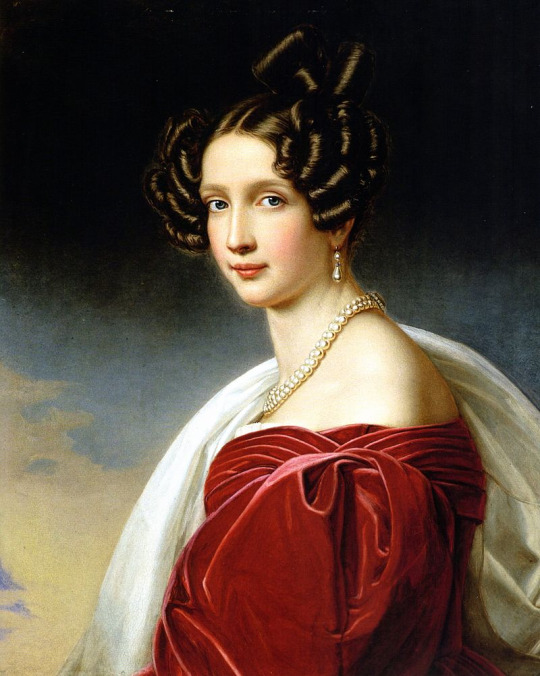
Even through the suffocation of Sophie’s constant pressure for a baby boy, Elisabeth did have four children. Her first was a baby girl, Sophie, born on March 5th, 1855. Her mother-in-law took the baby away from Sisi and named her after herself. Sophie refused to let Sisi take care of her baby. Then, Sisi had another baby girl, Gisela, on July 15th, 1856. Again, Sophie took the baby and Sisi couldn’t care for either of her children. The tragedy wasn’t over yet. In 1857, Sisi and Franz took a family trip with the girls to Hungary against the advice of both Sophie and the court physician. Both the girls became sick and Princess Sophie died. This caused Sisi to fall into a deep depression. Franz and Sophie brushed off her behavior. However, Sisi gave birth to another baby, but this time it was a boy. On August 21st, 1858 Crown Prince Rudolf was born. Rudolf was taken from Sisi and was raised by tutors at the age of 6. Sisi was blocked from the education of her children. In 1867 Sisi and Franz were crowned King and Queen of Hungary. A year later, Sisi gave birth to Marie Valerie on April 22nd, 1868. Below are images of Sisi’s children in order of birth.
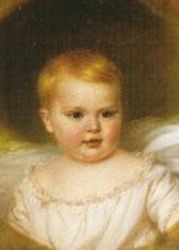
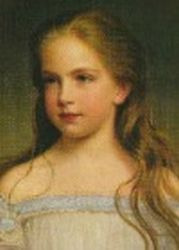
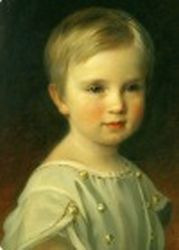
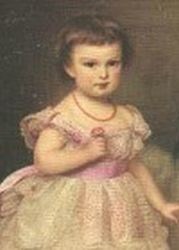
Sisi had very little control over many things in her life. However, one thing she did have control over was her body. She dieted constantly and became obsessed with her beauty. That’s how she kept her slender waist that she’s very famous for. Sisi spent a ton of time in Hungary with her youngest child. Sophie hated Hungary and this allowed Sisi to raise Marie on her own. Sophie died in 1872 and Sisi was finally free from her mother-in-law. There is one tragedy that Sisi would never get over. In 1889 Rudolf was found dead with his mistress which was done by their own hands.
On September 10th, 1898 Sisi was killed by an Italian Anarchist while boarding a boat in Geneva. She was stabbed in the heart and had not realized what had happened to her. She died a few hours later.
Source: https://www.palaces-of-europe.com/empress-sisi.html
3 notes
·
View notes
Photo

Timeline of the Life of Charles Haddon Spurgeon (1834-1892)
Charles Haddon Spurgeon (1834-1892) was called to pastor the New Park Street Chapel, London, when he was only nineteen. This church became the 6,000 seat Metropolitan Tabernacle, which he pastored until his death at age 58. Through his relatively short but phenomenally productive ministry, Spurgeon pastored, directed a Pastor’s College, oversaw a Bible and tract society, organized Stockwell Orphanage, published the monthly magazine Sword and Trowel, edited a weekly sermon (among the several he preached each week), and wrote a number of books, including his well-known Treasury of David.
1834 (June 19) – Born at Kelvedon, Essex.
1850 (January 6) – Converted at Colchester.
1850 (April 4) - Admitted to Church membership at Newmarket.
1850 (May 3) – Baptized in the River Lark at Isle-ham.
1851 – Becomes Pastor of Waterbeach Baptist Chapel.
1853 – First literary effort, No. I of Water-beach Tracts published.
1853 (December) – Preaches at New Park Street Chapel, London, for the first time.
1854 (April) – Accepts Pastorate of New Park Street Chapel.
1855 (January) – First sermon in the “New Park Street Pulpit” published.
1855 (February) – First preaches at Exeter Hall.
1855 (July) – Mr. T. W. Medhurst becomes C. H. Spurgeon’s first ministerial student.
1856 (January 8) – Marries Miss Susannah Thompson.
1856 (June) – Metropolitan Tabernacle Building Committee formed.
1856 (September 20) - Twin sons Thomas and Charles born.
1856 (October 19) – Surrey Gardens Music Hall Disaster.
1856 (November 23) – Services recommenced at the Music Hall.
1857 – A second student accepted by C. H. Spurgeon and the Pastor’s College practically founded.
1857 (October 7) – Preaches to 23,654 persons at the Crystal Palace on Fast Day.
1859 (August 16) – Foundation Stone of the Metropolitan Tabernacle laid.
1861 (March 18) – Metropolitan Tabernacle opened with a great prayer meeting.
1864 (June 5) – The famous “Baptismal Regeneration” sermon preached.
1866 – Metropolitan Tabernacle Colportage Association founded.
1867 (March 24-April 21) – Sunday services, each attended by 20,000 persons, held at the Agricultural Hall, Islington, during the renovation of the Metropolitan Tabernacle.
1867 – Stockwell Orphanage (Boys’ side) founded.
1873 (October 14) – Foundation Stone of the Pastors’ College Building laid.
1875 – Mrs. Spurgeon’s Book Fund inaugurated.
1879 – Girls’ Orphanage founded.
1884 (June 18 and 19) – Jubilee Celebrations and presentation of testimonial (£4,500).
1887 (August) – First “Down-grade” paper published in “The Sword and the Trowel.”
1887 (October) – Withdrawal from the Baptist Union.
1891 (June 7) – Last sermon at the Metropolitan Tabernacle.
1891 (October 26) – Goes to Mentone for the last time.
1892 (January 31) – Passes away.
1892 (February 11) – Interred at Norwood Cemetery.
12 notes
·
View notes
Text
attended to his letters; a course of reducing exercises
or did you hear commentaries [ ] over the radio? I don’t have the time to do it. You don’t have time to do it. 1 and that, of course, you don’t have time to was taught the game 2 increasing the feed for / my dope, but you don’t have time 3 You don’t have time to investigate them fully yourself? No 4 It was hard work? — Yes, sir. You have to be fast and do the best you can. You don’t have time 5 for nearly everything; you don’t have time 6 You don’t have time to bother about your neighbors, and you don’t 7 enjoy our own com . pany , as we never have any chance to see friends around home, for you don’t have time after and before 8 And in some cases wastefully? — Not wastefully. Does not one involve the other? — I don’t see it in that light. A man applies for relief. You don’t have time to see that man. 9 you don’t have time to spend one hour in thinking every day to see your business in a bigger, better, and cleaner way than it is today. [ ] desk covered with papers, unfinished business, no time to see 10 the “ticket” for large swamps. You don’t have time 11 You see, when you’re on the news end of a thing like this you don’t have time to get worked up. 12 “Well,” she said, “I suppose you are so busy at the office you don’t have time. 13 you are so terribly busy that I suppose you don’t have time to feel lonesome. Why can’t girls do something like that, too? 14 “How did you like it down there?” he asked. “Well” — she paused thoughtfully — “down there you can keep busy. There’s something to do all the time; you can keep so occupied that you don’t have time to stop and think and feel.” 15 you don’t have time to think of danger” But one foggy morning not long after... 16 today. always say you don’t have time to read. ward, like a girl 17 By the time he had days. When you’re busy you don’t have time to attended to his letters. 18 a course of reducing exercises, you don’t have time to think of that. I don’t believe I’m abnormal, perhaps I am, but 19 Well, I use two formulas; saying you “don’t have time” is part of the world of citation. Saying you “have time” is part of the world of translation. I think that the questioning typical of translation has always been absent in the plastic arts. 20
sources ( “you don’t have time,” all but two pre-1923 )
1 ex reporters’ transcript, April 20, 1959, The People of the State of California, Plaintiff, vs. Louis Estrada Moya, et al., Defendent, being part of the Transcript of Record, Supreme Court of the United States, October Term, 1960, No. 186, Luis Estrada Moya, Petitioner, vs. California on write of certiori to the Supreme Court of the State of California (petition filed June 9, 1960; granted June 27, 1960) : 200 aside — Google misdated this 1832; 1960 was outside of my search range. A well-known case (I was too young at the time to know it). Some sources : ◾ “A mother-in-law’s murder for hire scheme results in death penalty for all three participants” at vcdistrictattorney, in which this : “What made the case unique? The hired killers testified against Mrs. Duncan without commitment [that] the District Attorney would not seek the death penalty in exchange for their testimony... In fact, all three received the death penalty and were executed. Of course, today’s appellate courts would likely reverse a case in which a defense attorney failed to seek sentencing concessions in exchange for testimony.” ◾ Arlene Martinez, “Love, scandal and murder: Ventura County case drew national attention,” VC Star (June 29, 2013) ◾ Alice de Sturler review of Jim Barrett his definitive Ma Duncan at Defrosting Cold Cases (October 17, 2020) ◾ Cecelia Rasmussen, “A Mother’s Love Was the Death of Her Daughter-in-Law,” Los Angeles Times (January 20, 2002; paywall) ◾ Joan Renner, “Dead Woman Walking: Elizabeth Ann ‘Ma’ Duncan,” parts 1-4 (2013) at Deranged LA Crimes (True 20th Century tales of murder, mayhem, political corruption, and celebrity scandal) and, finally, ◾ wikipedia 2 OCR cross-column misread, at Annie Eliot, “John Emerson Gaines’s Love Affairs,” The Manhattan 2:5 (November 1883) : 467-475 (468) snippet view only, opens to hathitrust. Annie Eliot Trumbull (1857–1949), author of novels, short stories, and plays; associated with Hartford, Connecticut’s “Golden Age”. wikipedia 3 OCR cross-column misread at H. E. Browing on “Pig Tails,” at The Swine World (Google titles it Poland China World) 5:2 (September 1917) : 11 4 ex Statement of William E. Johnson, chief special officer, United States Indian Affairs, before Committee on Indian Affairs, re: Senate Resolution No. 263 (Washington, 1910) : 367-400 (392) an intense exchange, on sale of alcohol on reservations. William E. “Pussyfoot” Johnson (1862-1945) was an energetic and resourceful prohibitionist and law enforcement officer. (wikipedia) 5 here, Julius Baum, examined by J. R. Lamar (January 29, 1896), in Contested Election Case of Thomas E. Watson Vs. J.C.C. Black, from the Tenth Congressional District of the State of Georgia, and published in/by the U.S. Congress, Committee on Elections (Washington, 1896) : 535 aside — an episode in the dismantling of Reconstruction institutions and Black suffrage. ◾ Thomas E(dward). Watson (1856-1922) (wikipedia). ◾ Watson is discussed in Jo Ann Whatley, her remarkable MA thesis Pike County Blacks : the spirit of populist revolt and White tolerance (1891-1896) as depicted in the Pike County Journal and other related sources (Atlanta University, 1984), available here ◾ Watson was succeeded by James C(onquest). C(ross). Black (1842-1928) (wikipedia). “Black was declared the winner of the election but Watson charged that the vote was fraudulent. Black agreed to resign his seat just after the opening of the 54th Congress so that a new election could be held. In the October 1895 special election, Black prevailed over Watson again, and thus took his seat back to fill the vacancy caused by his own resignation.” J.C. C. Black entry, at Biographical Directory of the United States Congress 6 ex Investigation of Hazing at U. S. Military Academy, being “Testimony taken by the Select Committee of the House of Representatives appointed to investigate and report on the alleged hazing and resulting death of Oscar L. Booz, late a cadet at the Military Academy, and upon the subject of the practice of hazing at the said academy.” (1901) : 776 7 another contested election, here Mrs. Louise Roller under cross-examination by Mr. Goldsmith, in Scholl, Charles L. Vs. Bell, Henry A. Jefferson Circuit Court (Louisville, Kentucky), Chancery Branch: First Division, Chas. L. Scholl, Plaintiff Vs. Henry A. Bell, Defendant. No. 41519. / Second Division, Arthur Peter, Plaintiff Vs. Chas. A. Wilson, Defendant, No. 41524. : “Contested election cases heard together,” Transcript of Record, Volume 8 (10 volumes in 9) : 39 (snippet only, but in full at hathitrust) 8 ex report from Washington Division (by Cert. 9730), 23:5 (May 1906) [number/month uncertain, could be June] : 712 (opens to hathitrust; found via google snippet view) 9 ex the “Poplar Inquiry,” here an examination of Mr. P. G. Miles, Relieving Officer, in Transcript of Shorthand Notes taken at the Public Inquiry held by J. S. Davy, C.B., Chief General Inspector of the Local Government Board, “into the general conditions of the Poplar Union, its pauperism, and the admnistration of the guardians and their officers.” Presented to both Houses of Parliament... (London, 1906) : 141 On the Poplar workhouse, see workhouses.org.uk (scroll down (near bottom) to “The Poplar Union Scandal and Inquiry”). ◾ Poplar is a district in East London (wikipedia) 10 ex E. Elmo Martin (Cleveland, Ohio), “How to hand the day’s work,” in National Lime Association Proceedings (Twentieth Annual Convention, Cleveland, Ohio; June 13-16, 1922) : 68-76 (73) (snippet view; full view at hathitrust) 11 ex H. Stimmons (Stark Co., Ohio), “More about coon hounds,” Hunter-trader-trapper 25:3 (December 1912) : 87-89 (88) (snippet view at Google, but full view at hathitrust, NW second paragraph) 12 ex Wayland Wells Williams (“author and artist,” 1888-1945), The Whirligig of Time (Frederick A. Stokes, 1916) : 335 Wayland Wells Williams papers at Yale YCAL MSS 551 13 ex T.I.M., “Dimpleton Stays at Home : A Story with a Real Moral,” in Life (July 25, 1907) : 155-158 (156) 14 snippet view only, at The Cactus (Austin, Texas; 1908) : 275 A journal “published by and for the students of the University of Texas”; 1907 and 1909 (but not 1908 alas) at hathitrust. 15 “down there” being Chicago, ex Henry Oyen (1883-1921), chapter 36 of “Big Flat,” in The Country Gentleman 84: (March 8, 1919) : 20, 22, 57-59 The novel was published in 1919, same passage at p 204 (NYPL copy) ◾ Haven't located much information about Oyen; his published work is listed at his Online Books page 16 Homer Randall. Army Boys in the French Trenches Or, Hand to Hand Fighting with the Enemy (New York: George Sully & Company, 1918) : 199 Six “Army Boys” titles were produced by the Stratemeyer Syndicate 1918-1920, all under the pseudonym Homer Randall : Army Boys in France, Army Boys in the French Trenches, Army Boys on the Firing Line, Army Boys in the Big Drive, Army Boys Marching into Germany, and Army Boys on German Soil (stratemeyer.org) ◾ The Stratemeyer Syndicate records (1832-1984; bulk 1905-1984) are at NYPL ◾ See also Stratemeyer pseudonyms and series books : an annotated checklist of Stratemeyer and Stratemeyer Syndicate publications / compiled and edited by Deidre Johnson (1982); Deidre Johnson, Edward Stratemeyer and the Stratemeyer Syndicate (Twayne Publishers, 1993); and wikipedia 17 OCR cross-column misread at Harriet Winton Davis, “With the Children : Don’s Knitting,” in The Congregationalist and Advance (August 29, 1918) : 241 Other (not this) issues at hathitrust 18 OCR cross-column misread (extended here), ex H. D. Morgan, Ph. C., “The Kid,” in the section Original and Selected : From the best writers, and the leading drug, medical, chemical and scientific publications of the world, in Practical Druggist and Pharmaceutical Review of Reviews (November 1908) : 529-534 19 Frank R. Adams (1883-1963), “The Heart Pirate,” (illustrations by Charles D. Mitchell), in The Cosmopolitan 72:3 (March 1922) : 43-48, 117-118 (44) — snippet view, but opens at hathitrust More — “... yell for a diet and start doing a course of reducing exercises, you don’t have time to think of that. I don’t believe I’m abnormal, perhaps I am, but just since this afternoon I have come to the conclusion that if you want to put down crime you’ve got to suppress more than just alcohol — you’ve got to suppress the modern flapper. They’re so damnably desirable...” (It gets worse...). See wikipedia; author’s papers at Oregon 20 ex Giuseppe Caccavale : in giardino, a buon fresco (content by Laura Cherubini, Giuseppe Caccavale, Chiara Bertola and Claudia Gian Ferrari; Charta, 2009) : 77

Needed another line, and thought Samuel Beckett might provide. Search yielded no Beckett, but the above passage, fitting in its way and no more nor less ambiguous than anything else here. something recent — Giuseppe Caccavale « Projet Paul Celan », Residence Concordia, Parigi gennaio-ottobre 2020; testo e foto dell’artista. (1 February 2021)
method
A friend reminded me, recently, that I don’t have time (for what is irrelevant here). Have been ruminating on (avoiding the consequences of) this, since. And thinking too about the place dimension of time, as discussed by Veronica O’Keane in her The Rag and Bone Shop : How we make memories and memories make us (2021) — “One’s sense of time is inseparable from events, but this is a sense of time. Might time have something to do with place cells?” (107) and “The whole concept of time is generally unhelpful in understanding science, be it physics or neuroscience... From the perspective of recording events, the present is consciousness. In a seemingly ironic twist, I myself think that the only place that time does not exist is in the moment of consciousness...” (113)
The encountered lines — all included above from my search in pre-1923 sources — have found their respective though non-chronological places in a kind of rocking, panning motion, in which sediments settle into their respective ripples / couplets.
Would, could, does this — sequence — work (whatever “work” means) without the anchorings / tetherings / bibliographic wastefull(ness; line 9 above) that follow it? They were needed in the making, anyway, and for there to be sufficient distraction for the making to sustain.
all subject to change.
#contested elections#couplet#time#swamps#waste#Poplar Inquiry#Giuseppe Caccavale#William E. Pussyfoot Johnson
21 notes
·
View notes